Maker[ ] @ Tech Lab
Oregon Museum of Science and Industry, 2011-2013
Oregon Museum of Science and Industry, 2011-2013
Partner: Multnomah County Library
As the Senior Educator for OMSI's Vernier Technology Lab, I served as the Co-Project Director and Program Developer for a $100,000 IMLS and MacArthur Learning Labs Planning grant. This grant laid the foundation for a Maker Lab at OMSI. It was also an impetus for OMSI's annual Portland Mini-Maker Faire. You can read about the grant in this KQED article.
During the planning grant phase, the Teen Services Specialist from Multnomah County Library and I formed a cross-institutional youth council, A-TAC (Awesome Teen Advisory Council), to establish what a Maker Lab could look, sound, and feel like. Together with we offered community roundtables to gather feedback about the lab. We also mentored the youth through all aspects of designing and running the space.
Over time, we transformed the Vernier Technology Lab into an area where visitors could explore the intersection of science, art, and design.
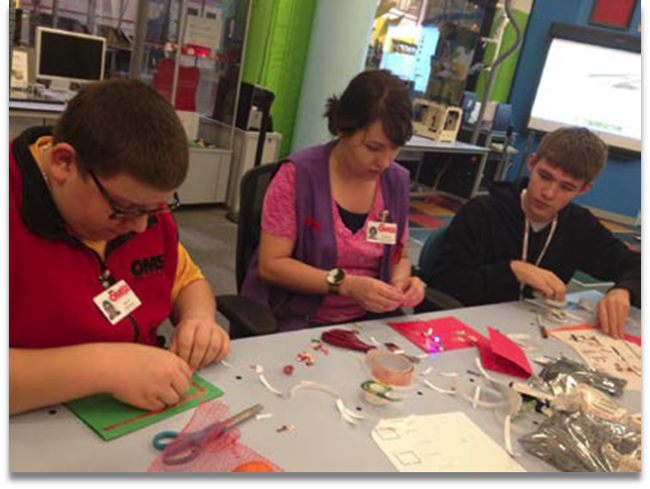
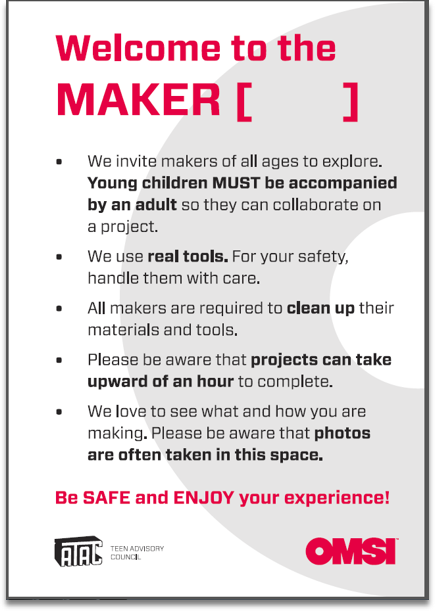

Pixel Arts Game Education assisted One Step Away Object Stories participants in developing Perspective, a board game based on their lived expertise and the top causes of homelessness in America. Visitors were asked to physically move through scenarios that can lead a person to be one step away from homelessness.
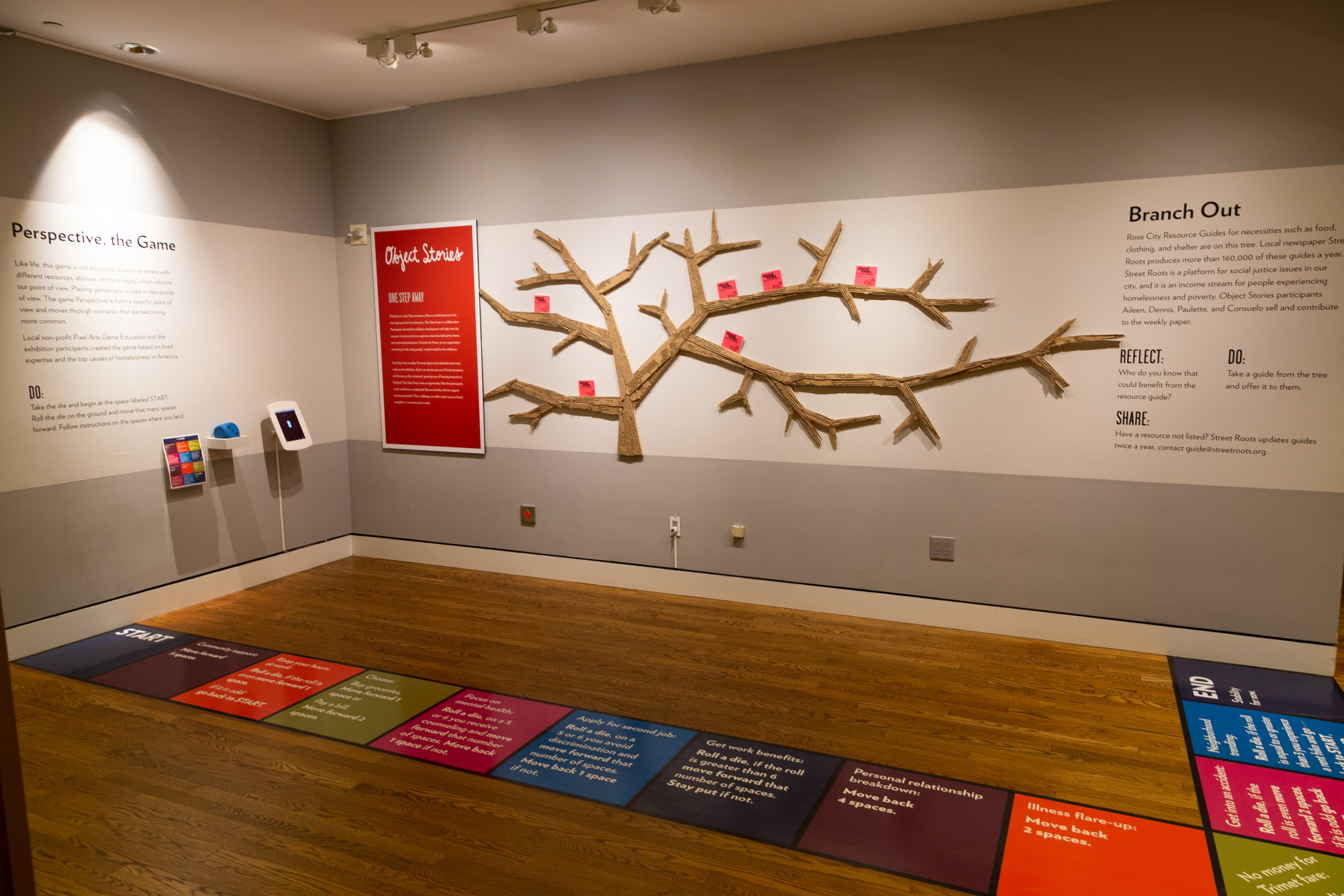
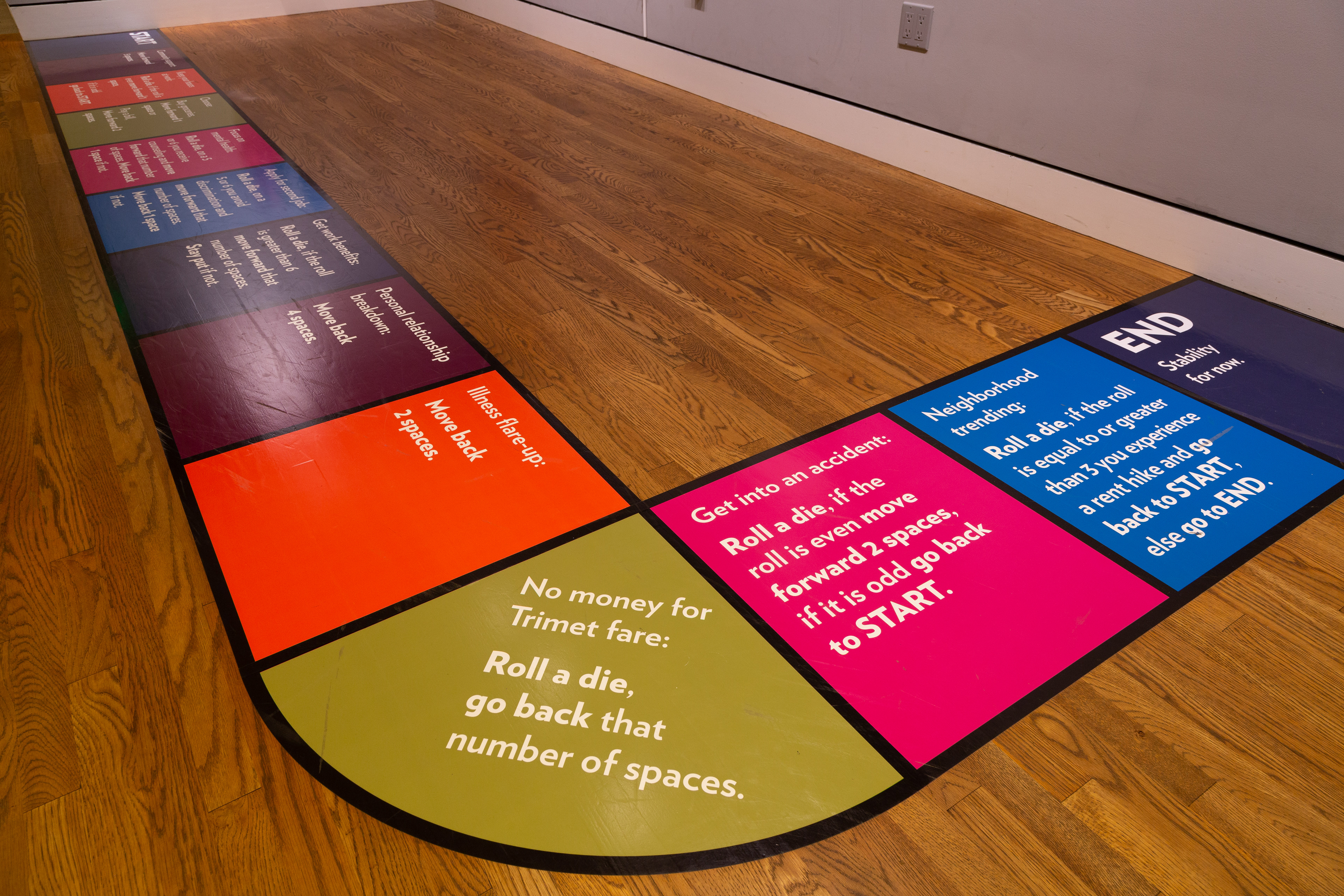
Example exhibition copy:
Section Panel - One Step Away
Portland Meet Portland
Portland Meet Portland, partner
Portland Art Museum, 2018
Portland Meet Portland, partner
Portland Art Museum, 2018
Portland Meet Portland established local relevance for Fazal Sheikh's exhibition Common Ground. This space encouraged visitors to question their pre-existing ideas of "Refugees" and examine their connection (or lack thereof) with refugees and the refugee crisis. Portland Meet Portland was divided into four areas: Community Map, Portraits, Book Nook, and a textiles display.
The Community Map
The map contained photographs of Portland locations taken by persons from area refugee communities. The photographs were printed on color-coded and numbered cards that corresponded to points on the map. Each card had a single photograph and the participant's answer to questions about the location. Handwritten responses in their native language are on the front, with an English translation on the back.
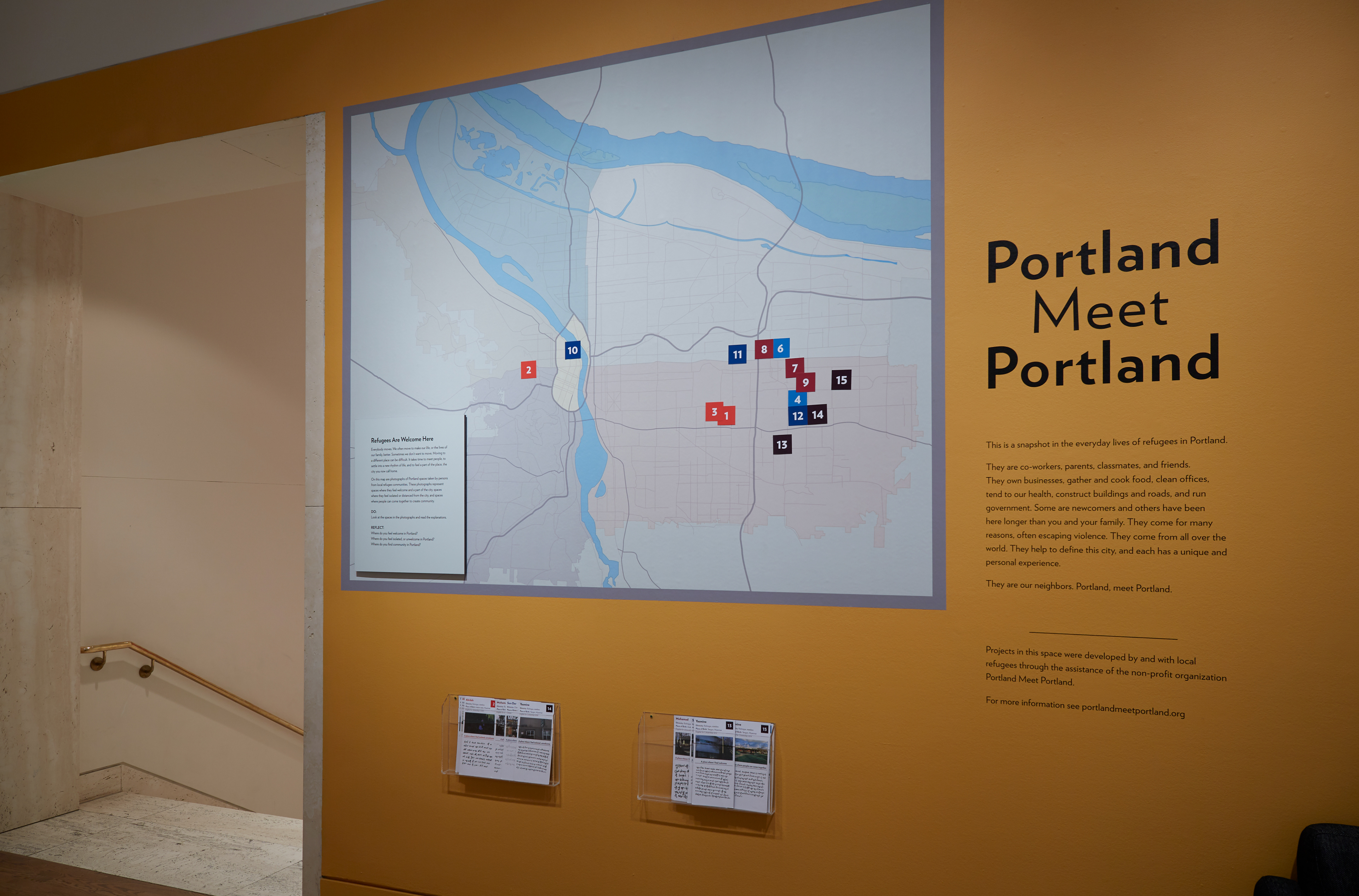
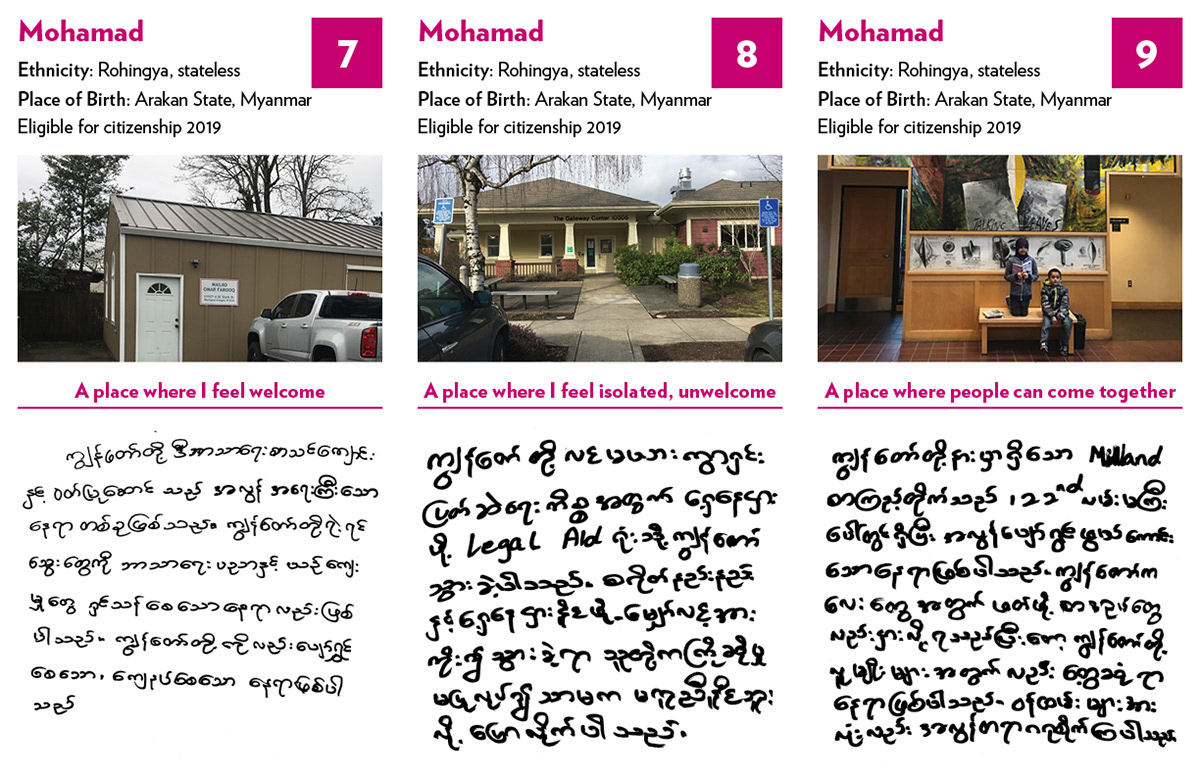
The Portraits
Youth photographer Kaykay Wah curated the Portraits project. She photographed and interviewed members of her refugee community of the Karen ethnic group of Myanmar. The first round of photographs included women aged 30-70 who all lived in Thai refugee camps before immigrating to Portland. The second round included primary and secondary grade students who were part of an after school tutoring program at IRCO (Immigrant and Refugee Community Organization).
Kaykay's interview questions were printed in personal notebooks and placed underneath the individual's corresponding portrait. Visitors were asked to read these questions and ask their own. Kaykay selected several visitor's questions from the notebooks, answered by her sitters, and returned for visitors to enjoy.
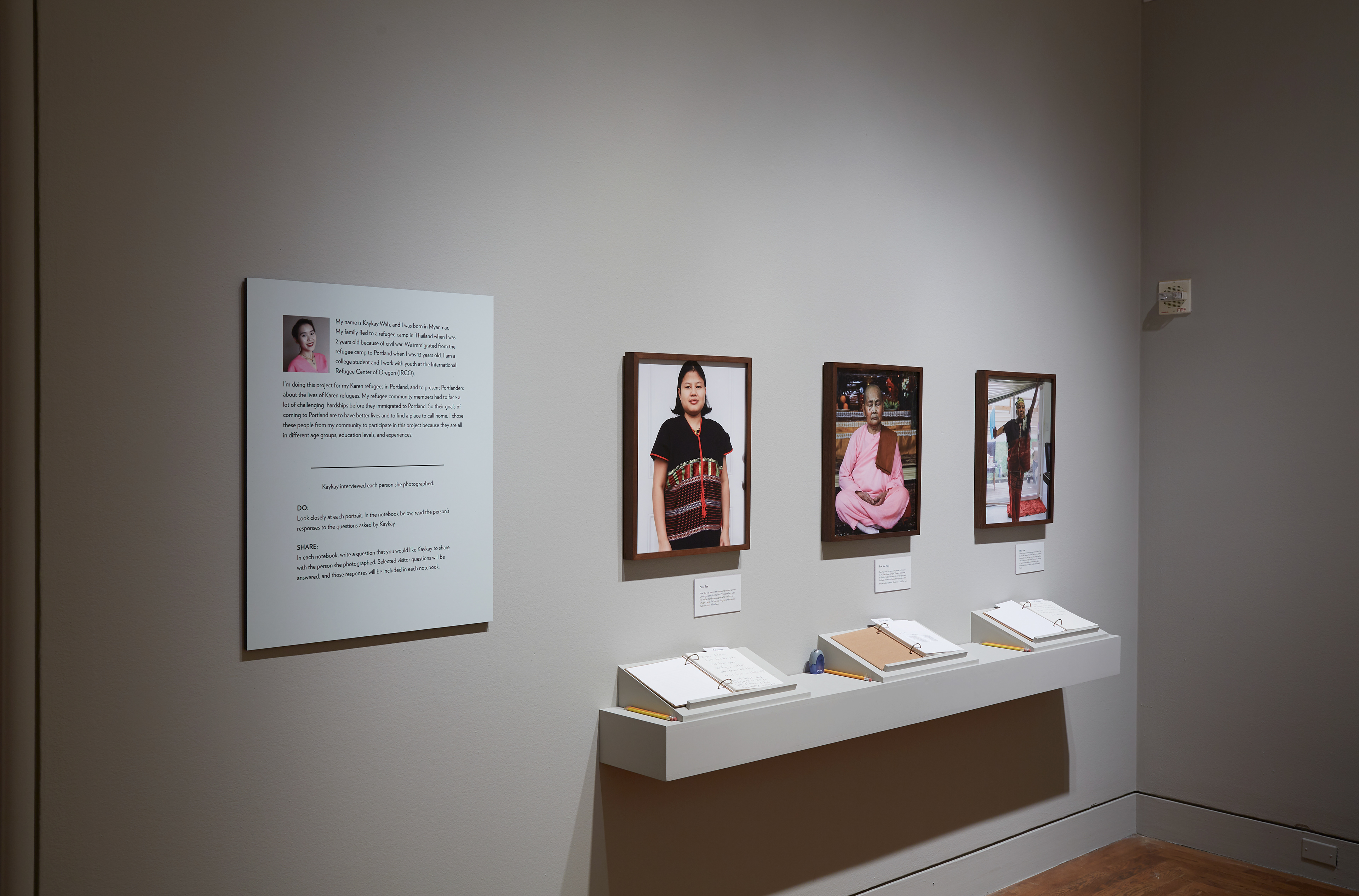
The Book Nook
Adult, teen, and children's books related to the themes in the exhibition were available for visitors to read and review. Many of the selections were made by local refugees and those who work with local refugee communities. Free bookmarks provide a link to information about why the books were selected and to resources curated by the Multnomah County Library.
Above the Book Nook hung textiles handmade by local refugee women from the Karen ethnic group of Myanmar. These women now weave together in the art therapy program Portland Pathways to Wellness of Lutheran Community Services Northwest, with assistance from the Portland Handweavers Guild.
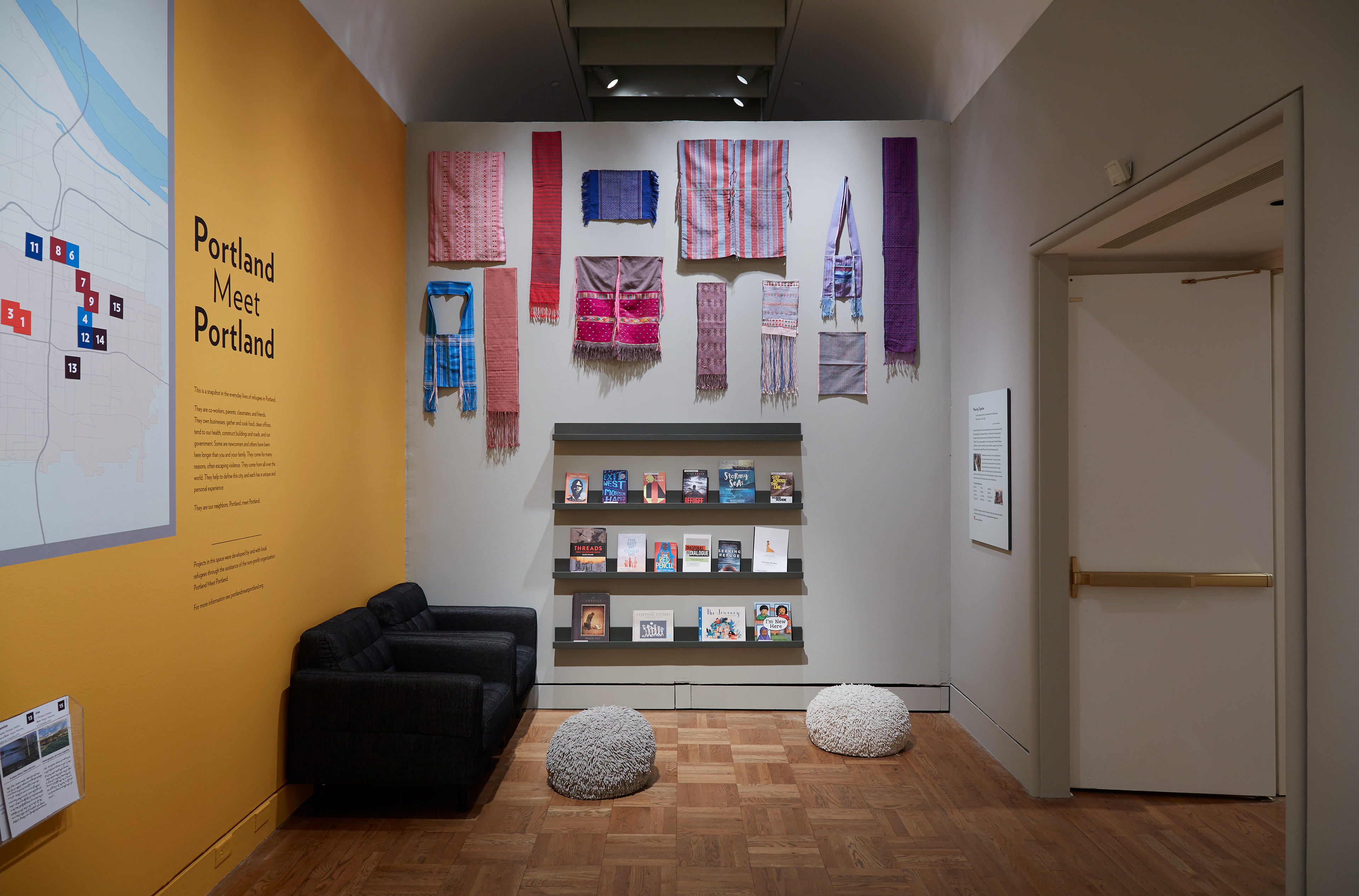
Invisible Me
Portland Art Museum, 2018
Portland Art Museum, 2018
Invisible Me was created with Object Stories participants and questioned conventional perceptions of disability by surfacing these conditions to break down their attached stigma, fear, and shame.
Two interpretive elements prompted visitors. The first asked visitors to “Name It” by sharing on a Post-it note their invisible disability. The second asked visitors to “Make It Visible” by choosing a button to wear or display that self-identifies them as a person with an invisible disability or an invisible disability ally. The response was overwhelming. At the exhibition's conclusion, visitors chose over 12,000 buttons and shared an excess of 8,000 deeply personal Post-it note responses.
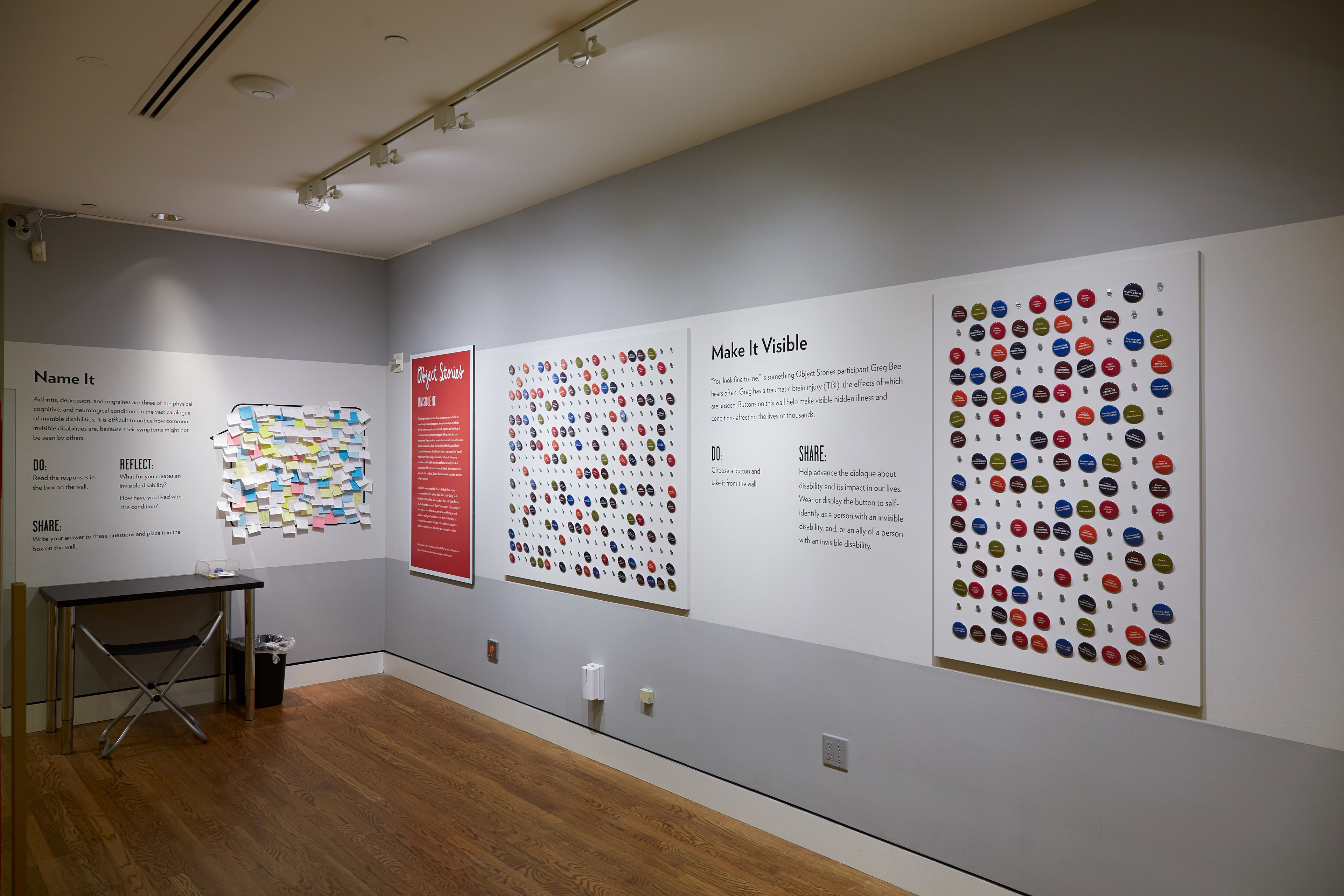


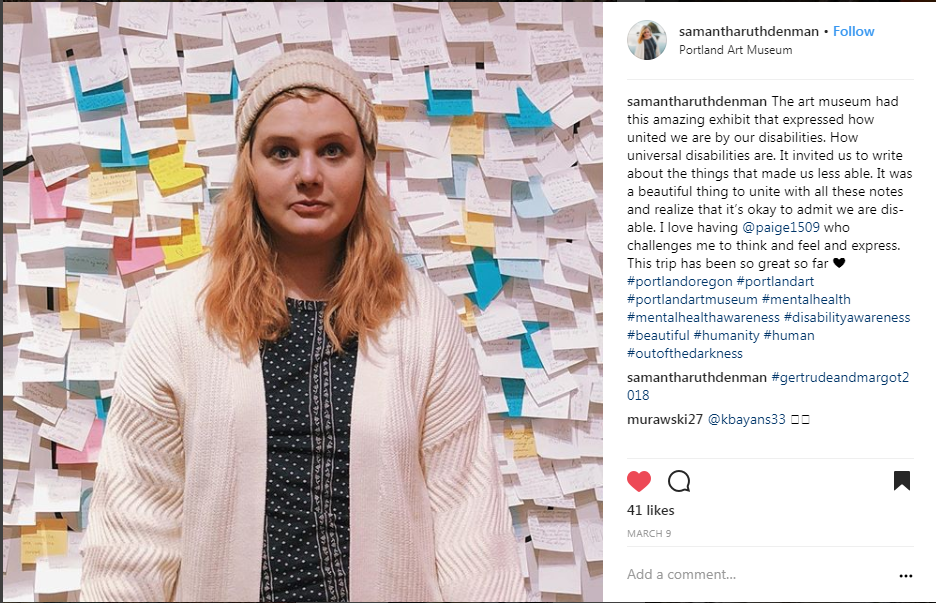


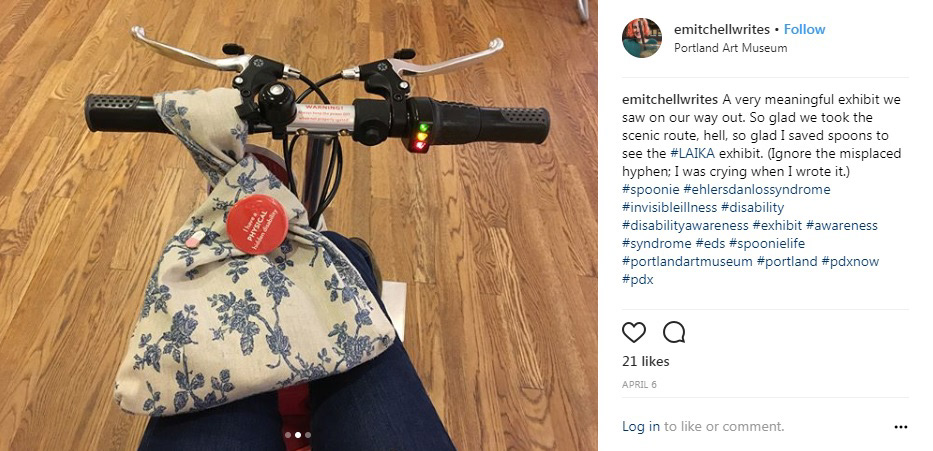
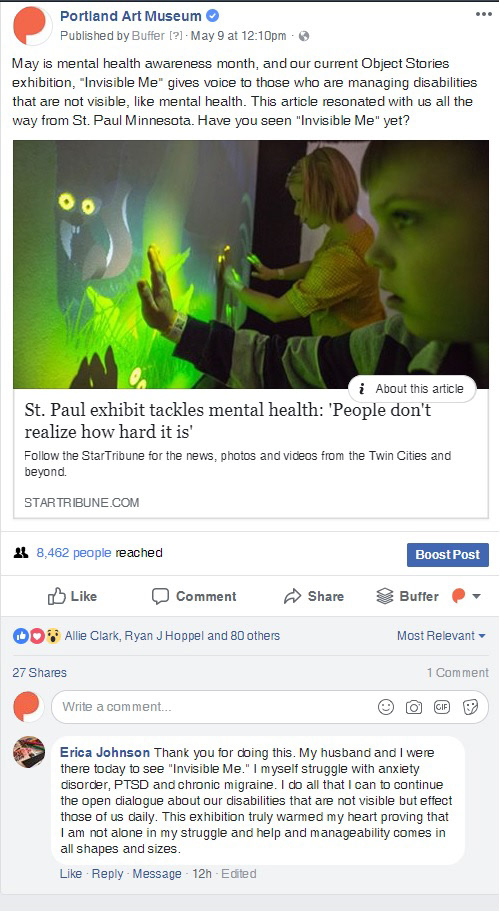
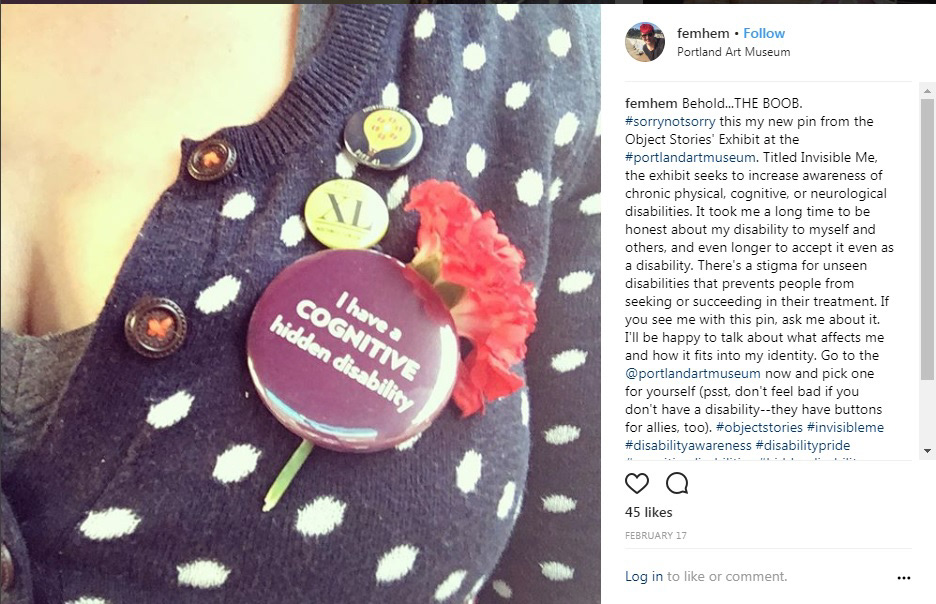

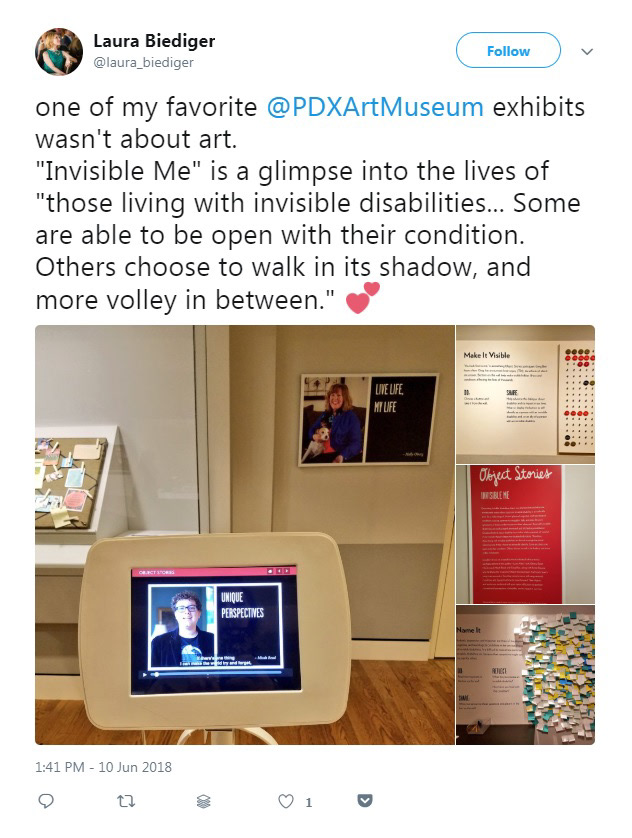
Example exhibition copy:
Section Panel - Invisible Me
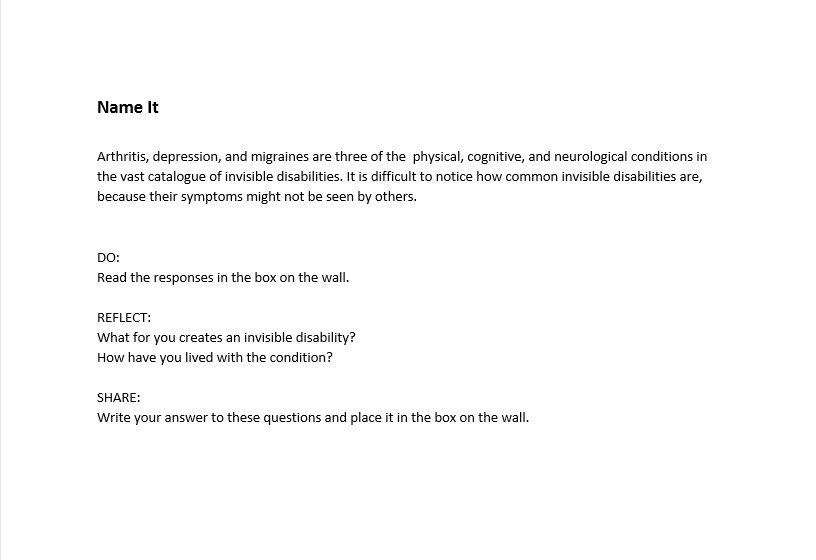
Contemporary Native Photographers
Portland Art Museum, 2016
Portland Art Museum, 2016
Contemporary Native Photographers and the Edward Curtis Legacy asked visitors to think critically about the portrayal of indigenous people in photography. Interpretive stations challenged the idea that indigenous peoples are a "vanishing race" and illustrated the uses and abuses of indigenous imagery in popular culture. These stations allowed visitors to enter a type of dialogue by connecting, circling, combing, or directly referencing other visitor responses.


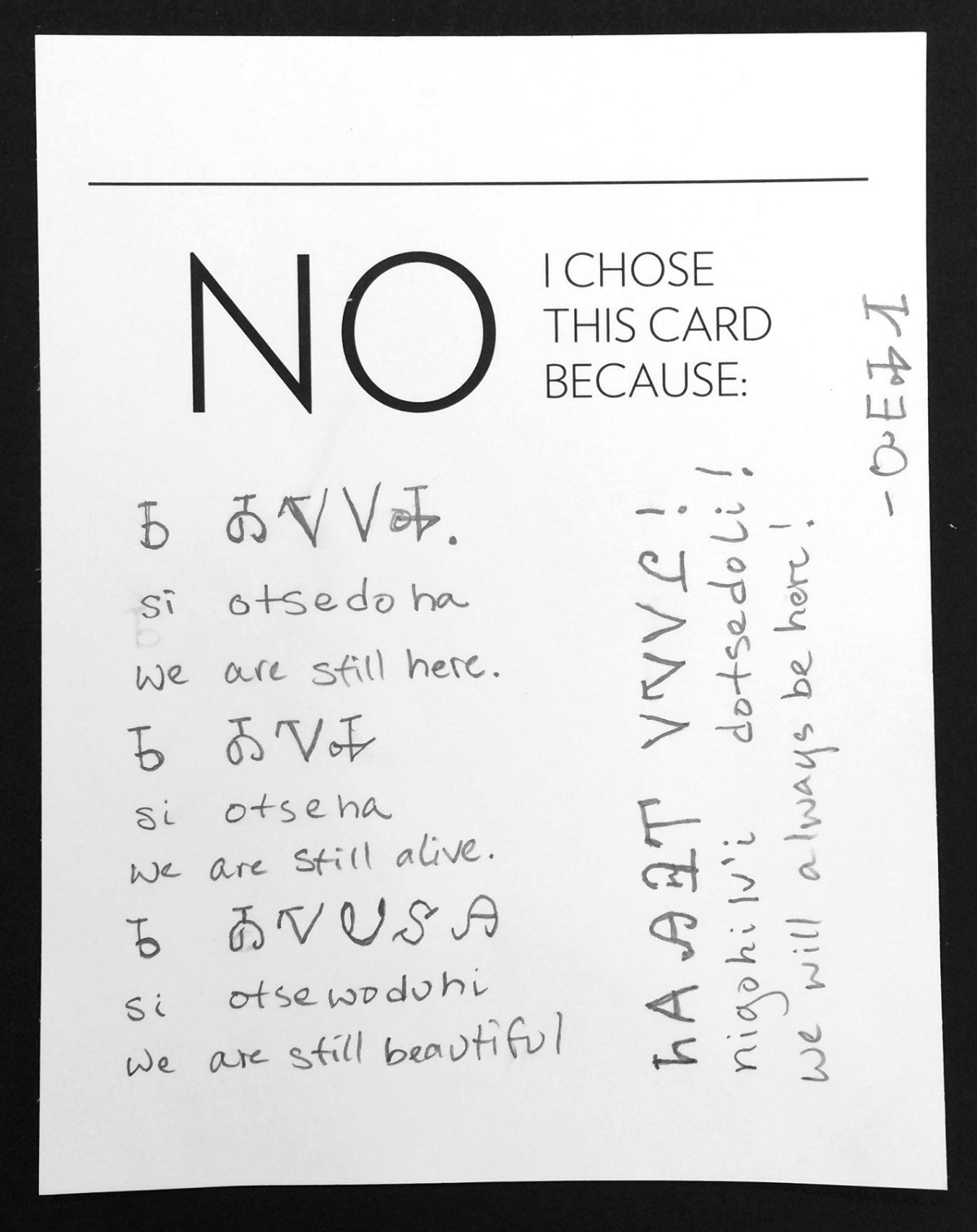
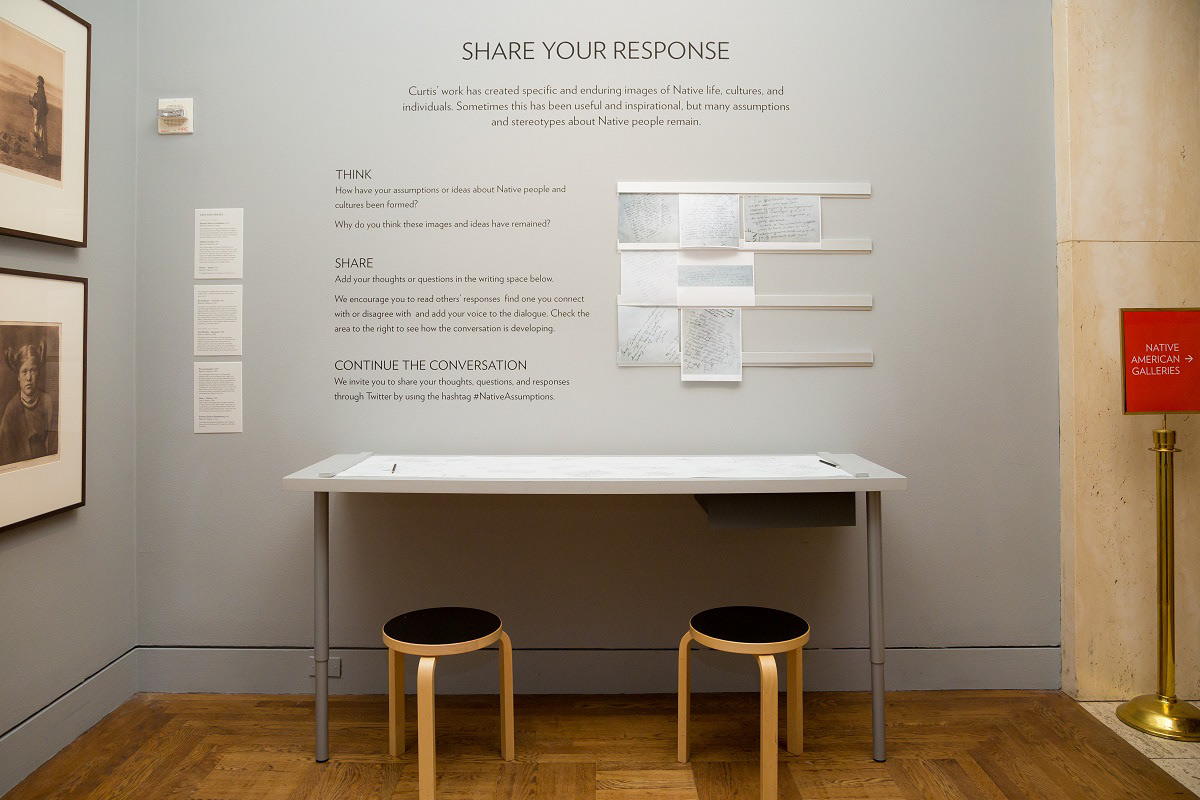


Powerful Self
Portland Art Museum, 2016
Portland Art Museum, 2016
Developed with Powerful Self Object Stories participants, this space encouraged visitors to reflect upon their own identity. Visitors listened to the storytellers discussing the question, "Can you see what I see?" The exhibition additionally offered visitors a chance to respond to similar questions about identity. Over 2,000 visitors wrote responses and placed them an in a colored envelope for others to contemplate.
.


Crafting Fashion
Portland Art Museum, 2016
Crafting Fashion was produced in response to the special exhibition Italian Style and together with the Object Stories exhibition Influencing Fashion. Crafting Fashion provided museum visitors the chance to meet twenty established and up-and-coming designers and makers from the region’s fashion community and learn about their practice through hands-on demonstrations.
Crafting Fashion accompanied "Fashioning You," a remix of Dorota Grabkowska's and Kuba Kolecthe's "What Made Me" project for the Birmingham Design Expo. With "Fashioning You" visitors charted their personal style across time by wrapping a portion of colored string around various pegs. Each peg had a social, environmental, physical, economic, or physical tag. Each color of the string represented a specific time in the visitor's life.


All mock-ups by Michael Smith, PAM Art Director
Mythos Challenge
Hive Cascadia, 2014 - 2016
The Mythos Challenge was a youth-led state-wide digital storytelling and gaming competition inspired by exhibitions at the Portland Art Museum. The Youth Council shaped the project's direction. The Game Competition invited Oregon youth to create a digital story, analog or digital game, or an app inspired by a special exhibition at the museum. The special exhibition Gods and Heroes inspired the 2015 competition, and the special exhibition Case Work inspired the 2016 competition. The Workshop Series aggregated participating community partners into a network where youth and mentors united to expand their learning opportunities. Winning entrants received cash prizes and mentorships with local developers. Their projects were played in the museum and at pop-up events across Portland.
Community partners included:
Airways Science for Kids
Girls, Inc. of the Pacific NW
Pacific Northwest College of Art: Make+ Think+ Code+
Multnomah County Library
ChickTech
Innovation Academy
Pixel Arts Game Education
Oregon Game Project Challenge
CymaSpace
Games to Gather
Portland Indie Game Squad
East Metro STEAM Partnership
OCSTA (Computer Science Teachers Association of Oregon)
Innovate Oregon
Portland Metro Stem Partnership
HIVE Cascadia
OregonASK
N/NE STEAM Coalition
Click here to play Cerberus Run, a game entered into the first Mythos Challenge by Sam Cheney and Rivera Mackaness.

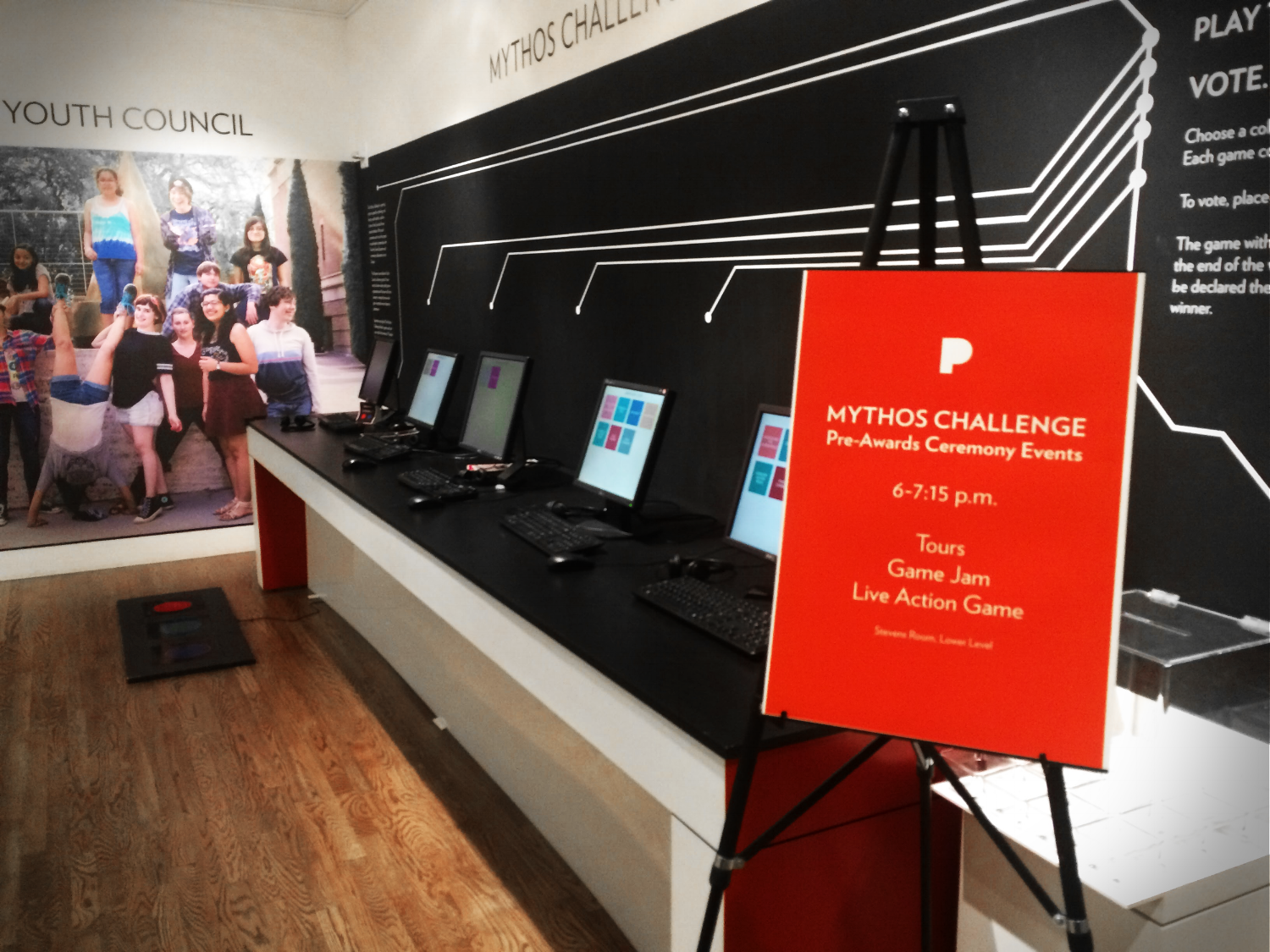
Reflecting on The Enclave
Portland Art Museum, 2014
Portland Art Museum, 2014
The Enclave was an emotional and immersive multimedia installation. The in-gallery interpretive space helped visitors react to and reflect on the exhibition. The space included a seating area and a deck of interpretive postcards. The front side of each card displayed a still photograph from the exhibition. The backside displayed prompts such as, "I saw... I heard... I felt..." Visitors could complete the prompts and leave completed cards in a collection box. A sign attached to the box invited visitors to "See what others have shared" via the project’s Tumblr page. This information indicated that visitors their responses were aggregated into an ongoing community commentary about The Enclave.
A case study on this project, "Reflecting on The Enclave: Building Meaningful Interpretation around Unsettling Contemporary Art," is a featured chapter in Interpreting the Art Museum, MuseumEtc Press, 2016.
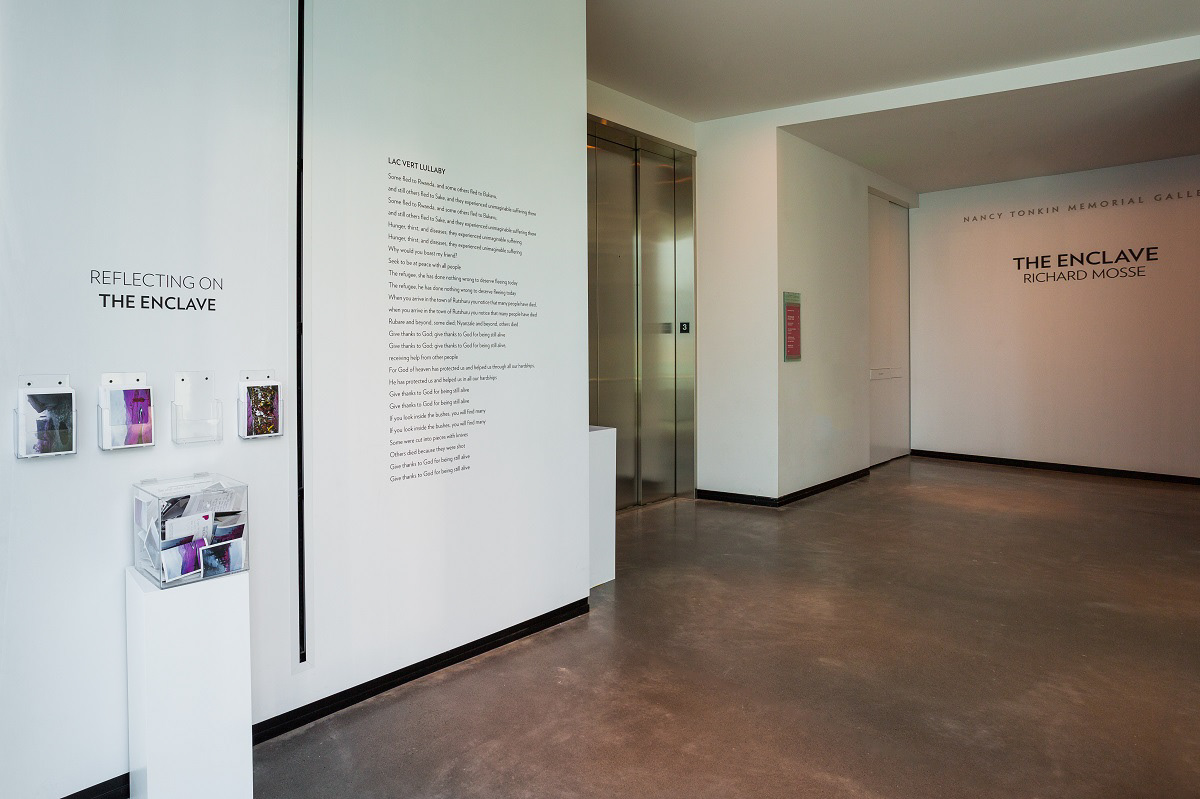
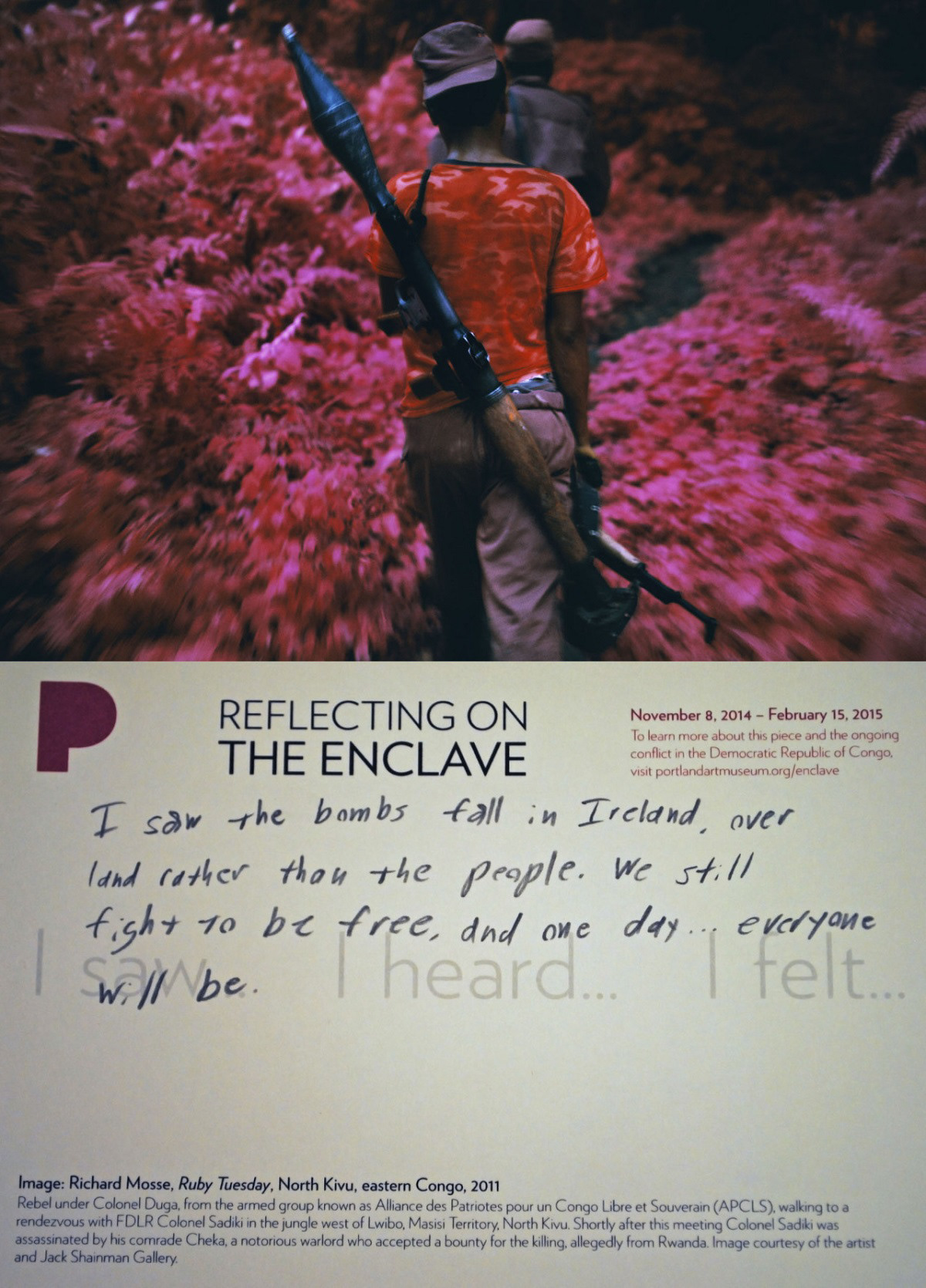
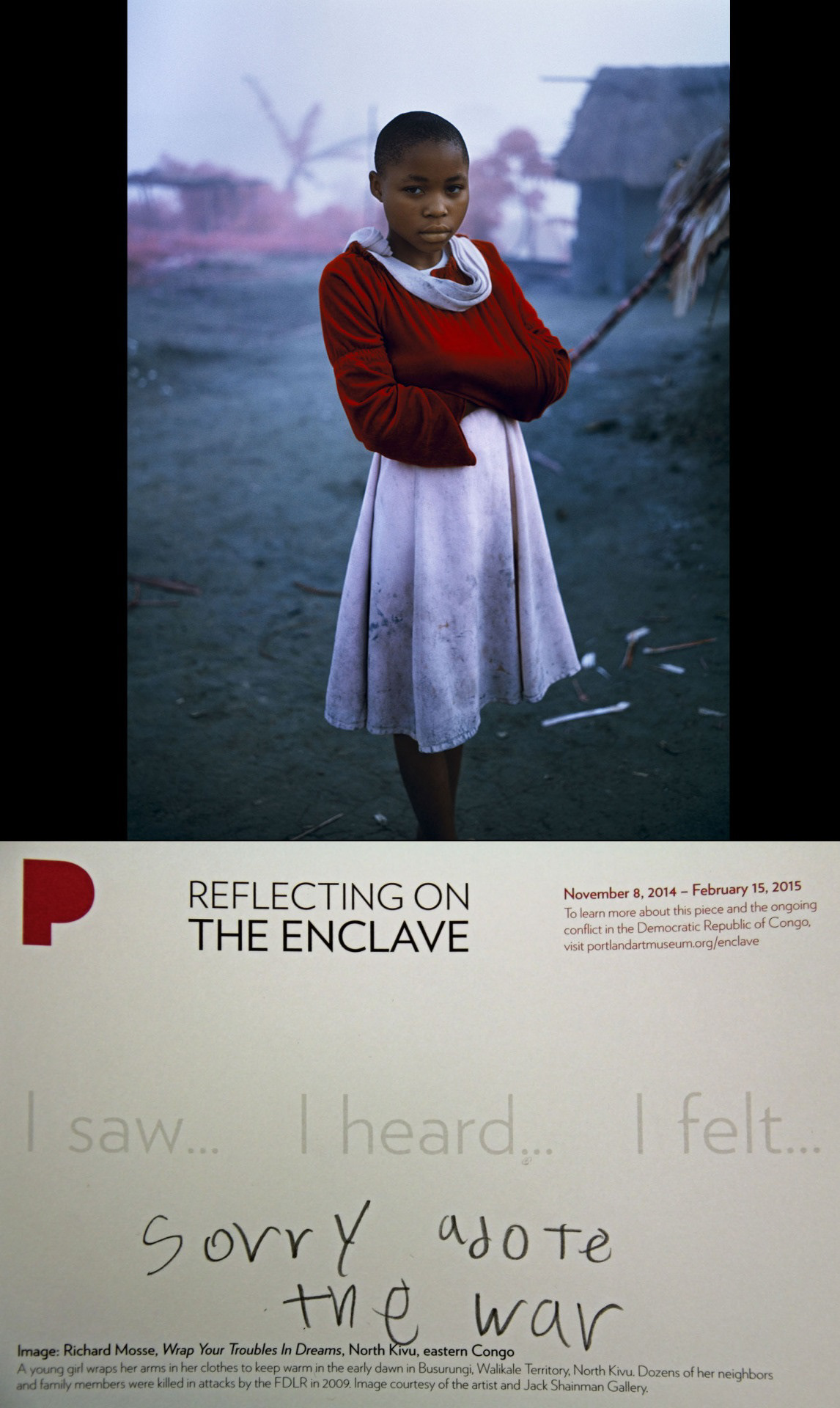
Project Lead
2011-2018
Duties included:
Collaborate with community stakeholders to design interactives and create participatory programs, seek out community stakeholders, develop and run community roundtables, purchase and test equipment, research, write, and edit analog and digital content.